GRUB
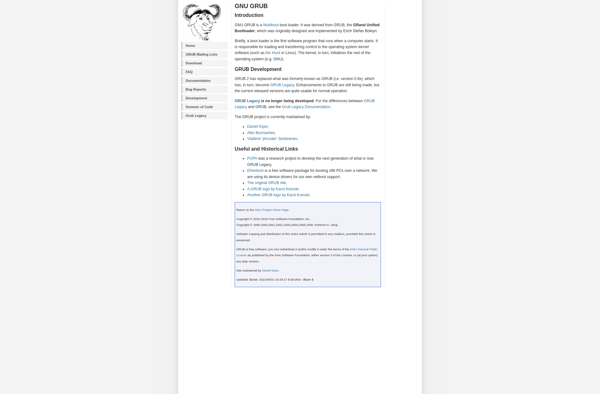
GRUB (GNU GRand Unified Bootloader)
An open source boot loader used to boot operating systems during start up, presenting users with a boot menu allowing them to choose between multiple operating systems installed on a computer.
What is GRUB?
GRUB (GNU GRand Unified Bootloader) is an open source boot loader used to boot operating systems during start up. It is the default boot loader for most Linux distributions and is also available for BSD, Solaris, and other operating systems.
When a computer first turns on, the BIOS initializes hardware components and then looks for a boot loader. GRUB allows the user to select which operating system to load at start up if multiple OSes are installed. It presents a boot menu with options for the various OSes and kernels available.
Some key features of GRUB include:
- Support for multiple operating systems - allows dual-booting Linux, Windows, macOS, etc.
- Modular design that makes it highly customizable
- Support for LVM and RAID partitions
- Support for multiple filesystems including ext, ReiserFS, XFS, FAT, and NTFS
- Graphical menu interface with background images and themes
- Password protection for boot menus
GRUB is highly flexible and customizable through editing its configuration file. Advanced users can tweak GRUB to alter boot options, change boot locations, set default OSes, customize menus, and more.
GRUB Features
Features
- Supports multiple operating systems
- Provides boot menu to choose OS at startup
- Modular design allows adding custom modules
- Supports booting from local drives or network
- Highly configurable through editing configuration file
Pricing
- Open Source
Pros
Cons
Official Links
Reviews & Ratings
Login to ReviewThe Best GRUB Alternatives
Top Os & Utilities and Boot Loaders and other similar apps like GRUB
Here are some alternatives to GRUB:
Suggest an alternative ❐Visual BCD Editor
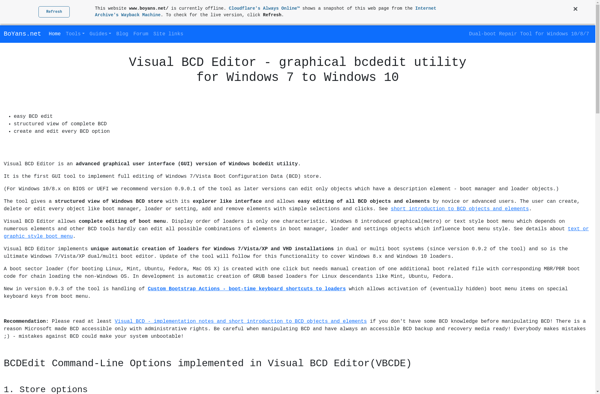
REFIt
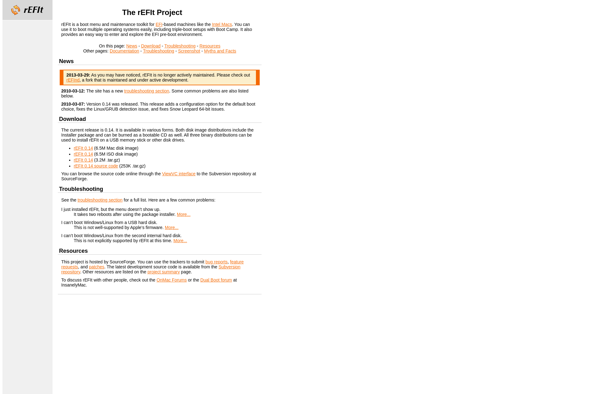
Grub2Win
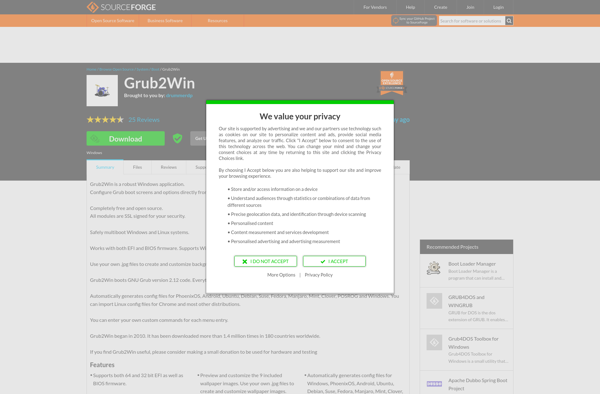
PLoP Boot Manager
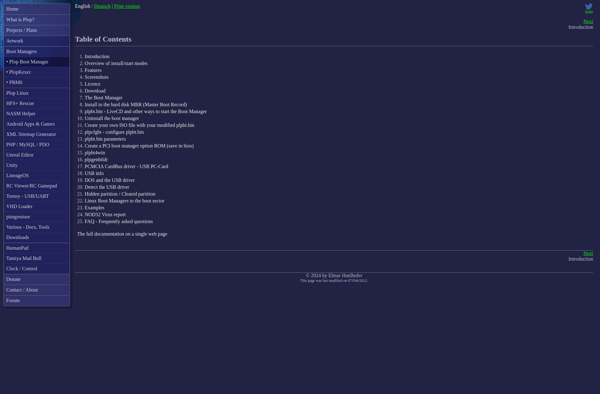
Chameleon Bootloader
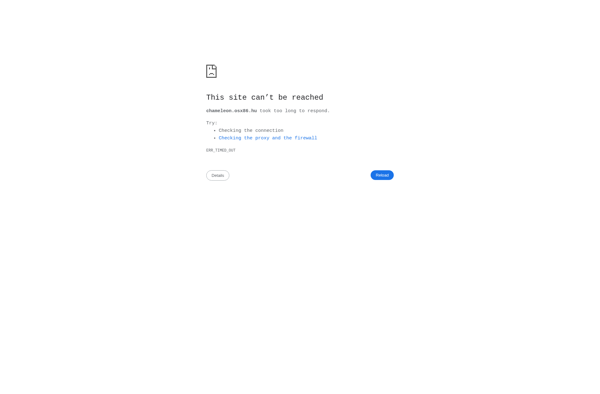
Gummiboot

REFInd - Boot Manager
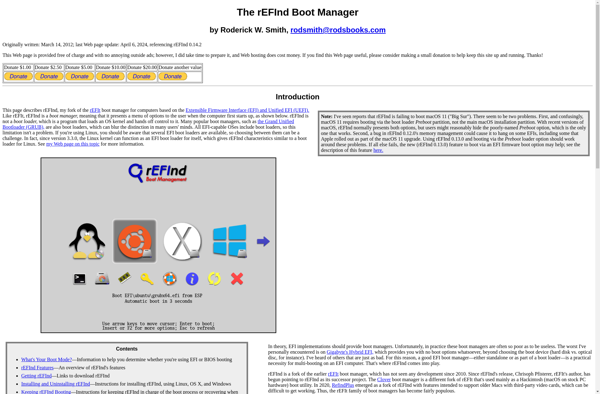
Clover EFI bootloader
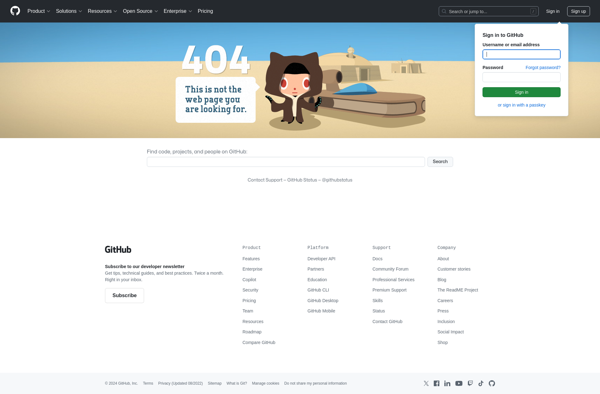
Libreboot
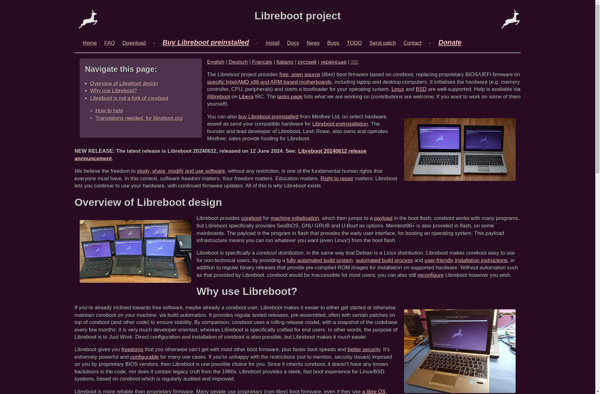
OSL2000 Boot Manager
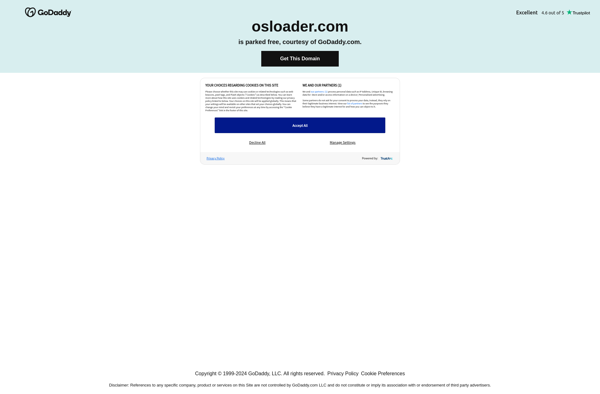
GRUB4DOS and WINGRUB

BootIt Bare Metal
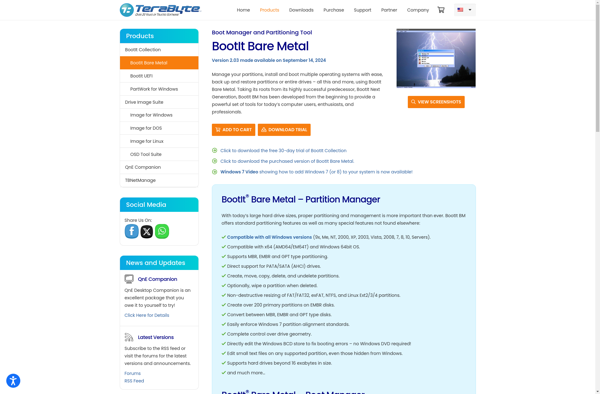
BootIt Next Generation
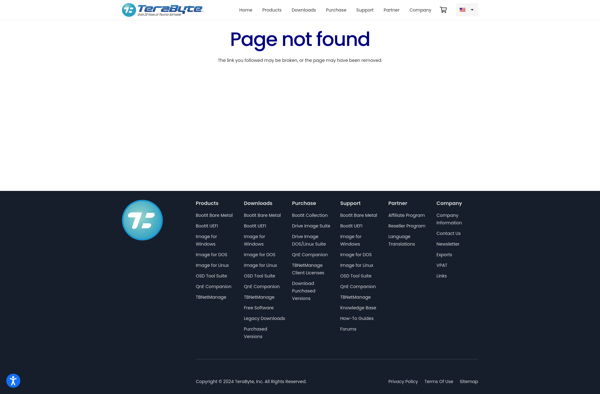
Linux Loader
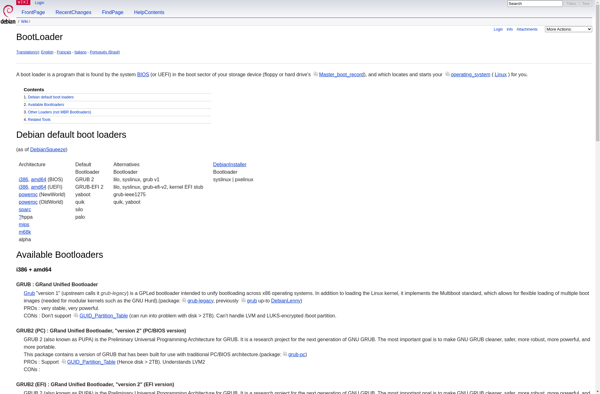
Petitboot

Bootcfg
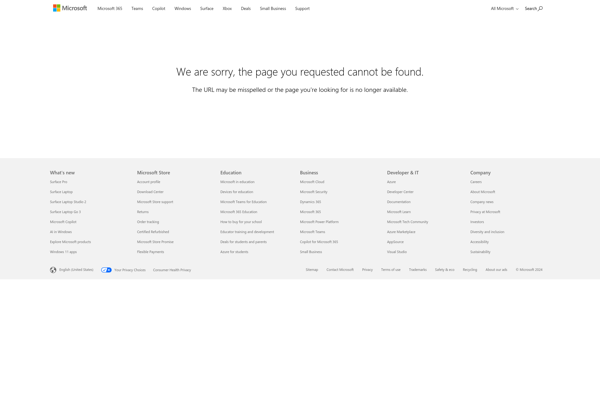
Partita 2000

DualBootPRO
